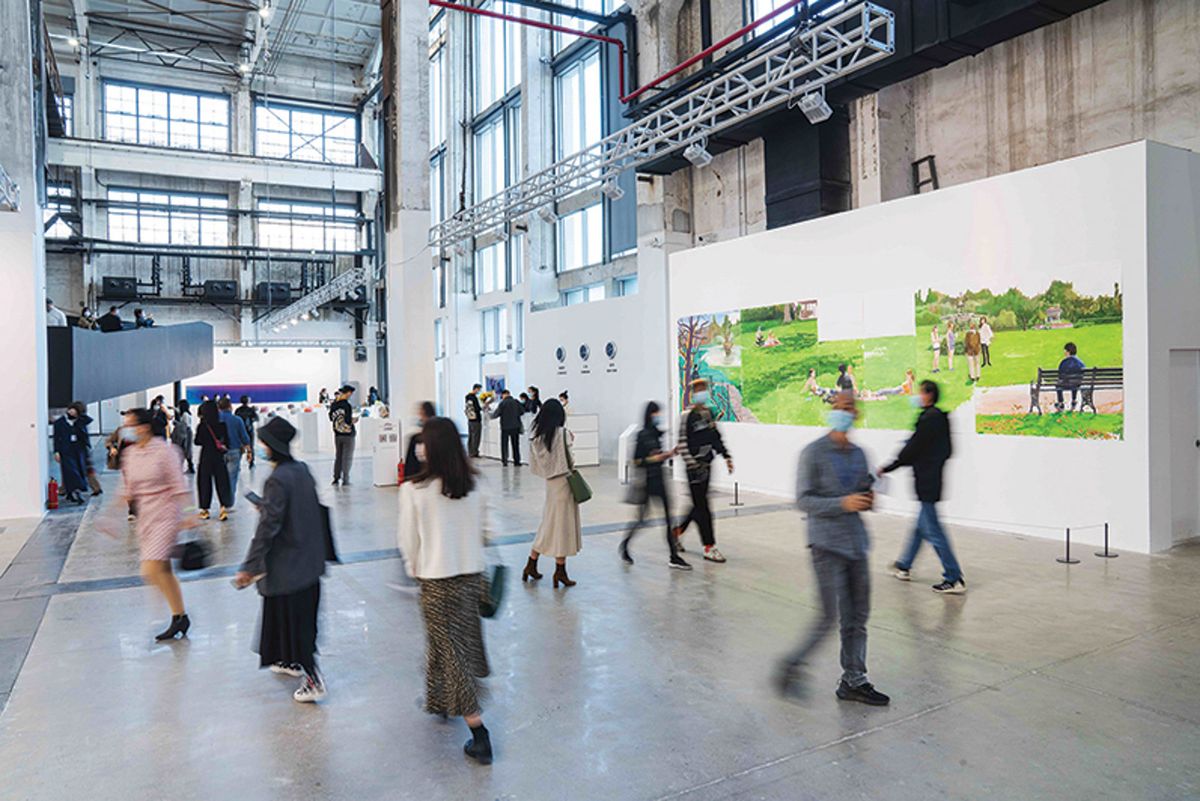November sees Shanghai’s annual art season return—and it is bigger than ever, with the new boutique fair Design Miami/Podium x Shanghai (4-14 November) and a rescheduled Photofairs Shanghai (3-6 November) running alongside the flagship fairs Art021 and West Bund Art & Design Fair (both 11-14 November). The government-backed Shanghai International Artwork Trade Month (SIATM) returns for a third year, offering extra customs support and tax dispensations for art transactions, while the city’s many institutions and galleries roll out their biggest exhibitions and events of the year.
“The pandemic has made Art021 and the West Bund the ‘bridgeheads’ of the Chinese market,” says Ray Dong, who directs the Art Market Research Center of Beijing’s Central Academy of Fine Arts. “Because people can’t go overseas, we have to come [to Shanghai]. Its position in the market and in the minds of Chinese collectors is becoming more and more important.” Dong adds: “Everyone enjoys convening in November—Shanghai collectors and art lovers from all over the country.” Design Miami/Podium x Shanghai selected November to coincide with Art021 and West Bund and to inject design into the art mix, says its founding director Chris Shao. “We want to be part of this festive scene and offer something different than painting and sculptures.”
Apart from the restricted borders and sporadic localised outbreaks, since national lockdown ended in the spring of 2020 mainland China has largely resumed business. Last year’s Shanghai Art Week was heralded as a heady recovery that kept Chinese galleries in business—and prompted a proliferation of new galleries opening in the city, and beyond.
For its eighth iteration, West Bund will expand to a third hall, the circular former cement factory West Bund Dome. Despite the pandemic, the fair still has 120 galleries, designer brands and art institutions, with 22 new exhibitors and 48 overseas galleries.
Art021 received “over 400 applicants and accepted about a quarter of that,” its co-founder David Chau says. He adds that while still cautious, international galleries “are learning to cope with the pandemic. Many expressed certainty that they will participate next year even if the world is still closed because market growth in China is something they cannot ignore.” Chau says the SIATM has improved by “leaps and bounds” since it launched to help dealers navigate customs and tax issues. “For example, this year’s exemption of VAT and import tax for art going through the fair channel is a result of this.”
Cancelled in 2020, Photofairs Shanghai resumes with 38 galleries—just over three-quarters of the usual number— including nine international galleries (six of which do not have a space in mainland China). Photofairs also features galleries from Chinese cities with more emergent scenes, like Changsha, Chengdu, Lanzhou, Suzhou, Urumqi and Zhengzhou. Along with a crop of new collectors, the fair’s artistic director, Fan Ni, says established buyers who were “unable to travel as easily [as before] have been paying more attention to local art events as well as exploring different types of art for their collections, including photography.”
However, the PU letters required for foreign nationals to obtain visas are rumoured to be tricky to obtain this year. “We applied for many PU letters but unfortunately none of them were granted,” Shao says. Therefore, no overseas galleries are able to attend in person. Still, Shao says “the economy overall is very optimistic, as China goes through a big transition from mass producing for foreign brands to establishing local brands and cultural identity. There must be some industries in decline, but the art and design market is climbing exponentially.”
With collectors unable to travel abroad easily, they may invest more time and money in Chinese artists, Dong hopes. “Many are cultivating more independent knowledge of artists, works and the market.” However, growth is mostly fuelled by newcomers: “Many new faces in galleries, fairs and auction houses are young collectors, mostly interested in contemporary art, especially works of artists born in the 1970s, 80s and even the 90s.”


